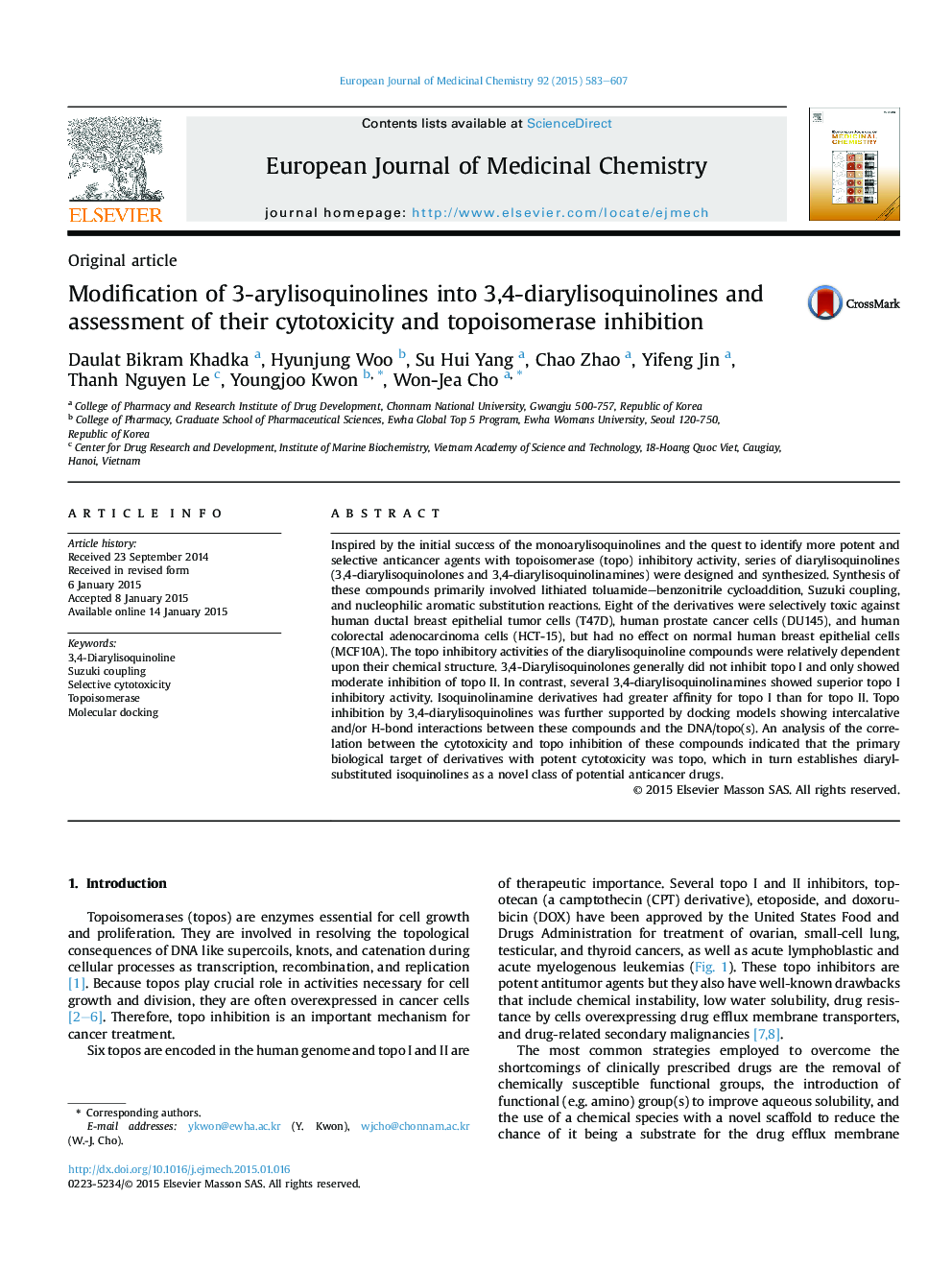| Article ID | Journal | Published Year | Pages | File Type |
|---|---|---|---|---|
| 1394019 | European Journal of Medicinal Chemistry | 2015 | 25 Pages |
•Monoarylisoquinolones were modified into diarylisoquinolines.•8 derivatives showed selective cytotoxicity against cancer cells versus a non-cancerous cell line.•3,4-Diarylisoquinolinamines showed superior topo I inhibitory activity.•Docking models showed intercalative/H-bond interactions between diarylisoquinolines and DNA/topo(s).
Inspired by the initial success of the monoarylisoquinolines and the quest to identify more potent and selective anticancer agents with topoisomerase (topo) inhibitory activity, series of diarylisoquinolines (3,4-diarylisoquinolones and 3,4-diarylisoquinolinamines) were designed and synthesized. Synthesis of these compounds primarily involved lithiated toluamide–benzonitrile cycloaddition, Suzuki coupling, and nucleophilic aromatic substitution reactions. Eight of the derivatives were selectively toxic against human ductal breast epithelial tumor cells (T47D), human prostate cancer cells (DU145), and human colorectal adenocarcinoma cells (HCT-15), but had no effect on normal human breast epithelial cells (MCF10A). The topo inhibitory activities of the diarylisoquinoline compounds were relatively dependent upon their chemical structure. 3,4-Diarylisoquinolones generally did not inhibit topo I and only showed moderate inhibition of topo II. In contrast, several 3,4-diarylisoquinolinamines showed superior topo I inhibitory activity. Isoquinolinamine derivatives had greater affinity for topo I than for topo II. Topo inhibition by 3,4-diarylisoquinolines was further supported by docking models showing intercalative and/or H-bond interactions between these compounds and the DNA/topo(s). An analysis of the correlation between the cytotoxicity and topo inhibition of these compounds indicated that the primary biological target of derivatives with potent cytotoxicity was topo, which in turn establishes diaryl-substituted isoquinolines as a novel class of potential anticancer drugs.
Graphical abstractFigure optionsDownload full-size imageDownload as PowerPoint slide
